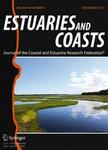版权所有:内蒙古大学图书馆 技术提供:维普资讯• 智图
内蒙古自治区呼和浩特市赛罕区大学西街235号 邮编: 010021

作者机构:Univ Louisiana Lafayette Inst Coastal & Water Res Lafayette LA 70504 USA JESCO Inc Jennings LA USA Univ Louisiana Lafayette Sch Geosci Lafayette LA 70504 USA Penn State Univ Dept Geog Riparia University Pk PA 16802 USA
出 版 物:《ESTUARIES AND COASTS》 (港湾和海岸)
年 卷 期:2022年第45卷第4期
页 面:1058-1069页
核心收录:
学科分类:0710[理学-生物学] 0830[工学-环境科学与工程(可授工学、理学、农学学位)] 07[理学] 0705[理学-地理学] 070501[理学-自然地理学]
基 金:University of Louisiana at Lafayette Institute for Coastal and Water Research
主 题:Unmanned aircraft systems Object-based image analysis Coastal wetlands Vegetation mapping Land-water interface Landscape patterns Ecosystem services
摘 要:Billions of dollars are projected to be spent on restoration projects along the northern Gulf Coast which will require efficient monitoring at both landscape and project-specific scales. Recent developments in unmanned aircraft systems (UAS) have sparked interest in the ability of these drones to capture hyperspatial imagery (pixel resolution 10 cm) that resolves individual species and produces accurate data for monitoring programs in coastal landscapes. We present a case study conducted at Coastwide Reference Monitoring System (CRMS) station 0392, aSpartina patens-dominated, oligohaline coastal marsh in Terrebonne Parish, Louisiana. Results demonstrate the ability of UAS technology to collect hyperspatial, multispectral aerial images in a coastal wetland, and to produce very-high-resolution orthomosaics and digital elevation models. We then used object-based image analysis (OBIA) techniques to (1) delineate the land-water interface, (2) classify composition by dominant species, and (3) quantify average plant height by species. Model results were validated with traditional on-the-ground CRMS vegetation surveys. Results suggest that OBIA methods can overcome the spectral variability of hyperspatial datasets, quantify uncertainties in conventional techniques, and provide improved estimates of wetland vegetation cover and species composition. These methods scale conventional plot-level coverage values to data-rich landscape-level models and provide useful tools to monitor restoration performance, landscape changes, and ecosystem services in coastal wetland systems.